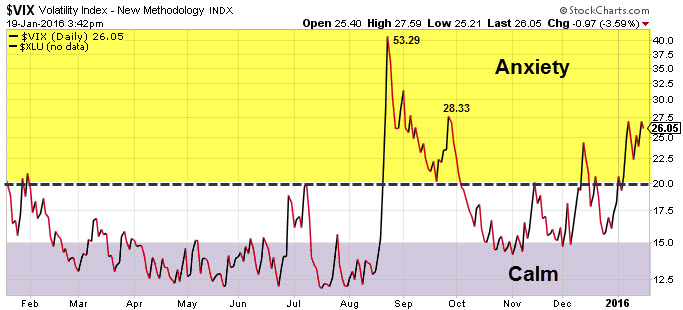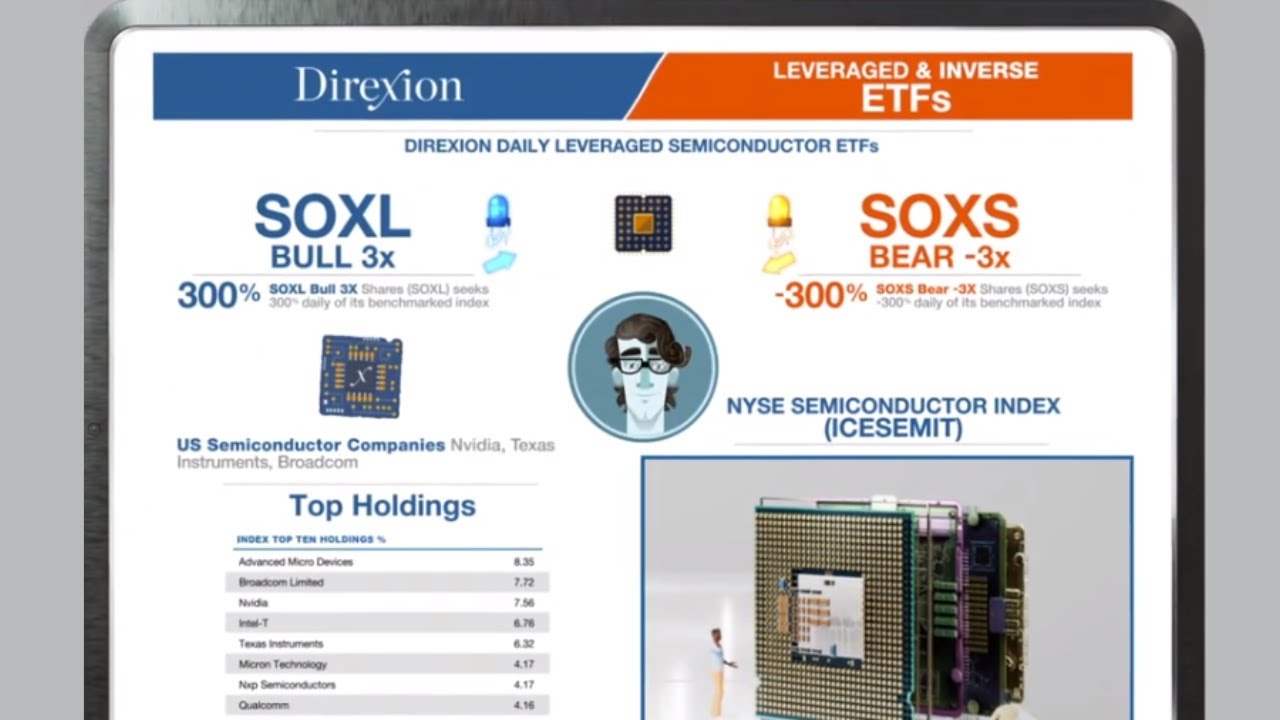Stock market volatility ain’t what it used to be. And unlike recent years, the VIX, a benchmark of volatility in S&P 500 stocks, (NYSEARCA:VOO) has been consistently up in 2016.
The chart below illustrates how market conditions and stock market volatility or VIX (ChicagoOptions:^VIX) have dramatically changed over the past 52-weeks.
(Audio) Stress-Test Your Investments Now + It’s Not a Bear Market (yet)
For a period of six months, beginning in mid-Feb. 2015, you’ll notice how stock market volatility was in calm waters, staying consistently under or near 15. Then, from late Aug. 2015 to Oct. 2015 the VIX spiked to a peak of 53.29. Interestingly, the VIX quickly retreated back into calm territory, staying mostly below 20.
However, thus far in 2016, the VIX has stayed firmly above 20, indicating market anxiety.
Ahead of the latest VIX surge, ETFguide PREMIUM wrote the following to readers on Dec. 30, 2015:
“Our last VIXY trade ended on 12/11/15 with a +14% gain but we never rest our laurels on the past. Every VIX trade is uniquely different. And that’s why we always tell readers that successfully trading VIX requires more than just skill; it requires patience. We’re adding a new position in the ProShares VIX ST Futures ETF (NYSEARCA:VIXY) at current prices near $13.05 with a buy limit up to $13.25. Right now, VIXY trades near its 50-day moving average and offers a good entry point.”
Since our VIXY entry, the ETF has surged just over +40% while the S&P 500 has slumped -9.32% during the same period. What if market conditions worsen? It could spell a sustained period of even higher stock market volatility (NYSEARCA:UVXY) in the S&P 500 that we haven’t experienced since the financial crisis. (In 2008, the VIX hit a fearful pinnacle of 89.53.)
It should be noted that volatility (or fear) has been even higher in other segments of the equity market like small caps (NYSEARCA:IWM) along with developed international and emerging markets (NYSEARCA:VEU). Markets are contagious and this fear has spread to relatively “safer” large cap U.S. stocks (NYSEARCA:VV), especially financial stocks (NYSEARCA:XLF).
Aside from tactically trading volatility using ETPs (NYSEARCA:VXX) or options contracts, preparing ahead of another volatility spike is the most effective way to combat sliding stock prices. Our online class Build, Grow, and Protect Your Money: A Step-by-Step Guide teaches you how to build a margin of safety within your portfolio. The class is available for free to our premium readers and it also includes a “Margin of Safety” worksheet.
In the end, the prudent investor always invests with a margin of safety regardless of whether volatility is up or not and regardless of whether market conditions are favorable or not.




